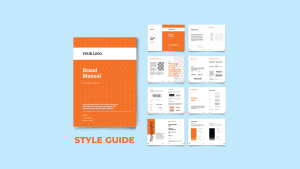We’ve found that so much time, energy, and resources go into a rebranding effort or brand development that many companies find themselves simply running out of steam and simply want to launch the new logo. It’s not uncommon for even those with enthusiasm to spare to be at a loss when it comes to developing a winning brand rollout strategy – after all, relaunching a brand is not a frequent undertaking and shouldn’t be taken lightly. Heck, for some companies, a rebrand happens once a century!
The composer of this strategy must carefully orchestrate countless components and activities; every cog depends on another for success. Even the smallest of businesses need to carefully consider which audiences need to be introduced to the new brand, this includes internal audiences. Often forgotten, but a pivotal part of a successful rollout, internal audiences are the key to a successful launch. Missing this key audience could turn a brand rollout into a nightmare.
Follow our tips and make sure your rebranding launch is effective and executed without a hitch.
Slow Down & Take Your Time on Your Brand Rollout
It’s not uncommon for companies to rush the rollout. They’re either exhausted or don’t understand the importance of getting the rollout right. Brand rollout campaigns have lots of moving cogs and many of the activities involved. For example, public relations, require significant lead time if you want to get it right. Your brand rollout strategy begins at the very early stages of the rebranding process. Starting early ensures you enough time both to strategize and execute. We recommend developing a brand rollout checklist. This becomes your guidepost to help you navigate a successful brand rollout process.
You’re rebrand is a story unfolding across all customer touchpoints. The question is, what story are you telling? ~ Joseph Kenney
Cover Your Bases
Don’t pull the switch on the new brand quite yet. Trust us, the world will wait for you! Before you introduce your new brand to the world, cover all your bases including the company’s sales materials, marketing communications, digital templates, print materials, social media, corporate environments, signage, vehicles, and promotional materials – basically, everything that you use to communicate internally and externally. Every base needs to be covered – every base needs to be updated. We encourage our clients to work backward from the desired launch date to ensure you allow ample time for both design and production, including printing and manufacturing when needed. Carefully consider your current supply of materials. Most businesses have heavily invested in business cards, flyers, brochures, rack cards, folders, just to name a few. Timing of the rollout should take carefully take into consideration the use of these materials to minimize waste and spend.
Identify Your Need To Know
A successful brand rollout will keenly identify the audiences internally and externally who need to know.
We’ve found this to be one of the most important steps, if not the single most important step for making sure that nothing falls through the cracks during your company’s brand rollout.
- Make triple sure you’ve identified all internal and external audiences, which may current and past clients, business partners, donors, vendors, chambers, networking groups, industry leaders, employees, board members, media, the community, and others.
- Identify which audiences require more a personalized approach to the announcement of the brand rollout. As important as anything, is the order in which the brand is rolled out. The introduction of the new brand should always be rolled out to internal audiences first; likely members of management, the board, and select teammates will be a part of the rebranding or rollout process. The success of the roll-out is predicated on your ability to convey the importance of the rollout to the rest of the organization. They will need to understand and embrace the new brand before it’s revealed to the outside world. If not, you will have a nightmare on your hands.
- Consideration of your key clients or top business partners will help you in determining the order. They should learn of the rollout right after internal audiences and before your customer base and the general public.
- Carefully consider the best way to connect with each audience group. We’ve found company-wide meetings followed by a question & answer session to be beneficial for your internal brand launch.
- Consider which key clients and business partners will receive personal calls about the brand launch – this is also a great opportunity to add a personal touch, reduce risk and help strengthen those relationships.
Develop Your Launch Story
Like an elevator pitch you’ve carefully crafted for years as a professional, it’s important you develop a launch story. After you’ve identified your internal and external audiences as well as your key customers, partners, and vendors and the best way to reach each one, take a breath. In fact, take a step back and think about how to tell your rebrand story. Your rebrand story must engage your audiences and ultimately demonstrate value in the short, mid, and long terms. While it’s understandable that you will want to discuss why your company has taken this new path with its rebrand, keep in mind that your message needs to be directed at your target audiences. What’s in it for them internally and externally. Why does this rebrand even matter? If we’re sitting in a corporate auditorium listening to a rebrand launch speech you can bet that we’re thinking about what’s the value in this rebrand for us personally. Orchestrate a successful ‘what’s in it for them’ rebrand story and then carry that through all launch communications – but customize it for different audiences and key players in the success of your organization.
A Success Plan for Each Audience

Now that you’ve successfully identified your key audiences, defined your priorities, and developed a rebrand story, you are ready to develop a launch campaign for each audience. A successful rebrand strategy should include its own communications plan for each individual audience – internally and externally. This communications plan should include release dates to ensure that adequate time is allowed for creative to develop communications. The creative deliverables may include:
- Preparing formal written letters
- Phone scripts
- Writing email announcements
- Production of video assets
- Designing email announcements
- Creating of logo-transition assets
Can’t Take Off Without a Launch Calendar
NASA has never launched a rocket without a launch calendar. It’s never happened. Not once. A successful brand rollout launch should include a formal launch calendar. Based on the communication plan for each individual target audience internally and externally, plot out all brand launch deliverables on a single launch timeline calendar – including every step of the communication process for each audience and the exact communications being delivered. Miss this and you’ve missed your opportunity for rebrand launch success. Successfully orchestrate a launch calendar and your rebrand launch announcement will take off like a rocket ship.
A STYLE GUIDE WILL POINT YOU IN THE RIGHT DIRECTION

This brand rollout article wouldn’t be complete if we didn’t take a step back and discuss the importance of a style guide or branding book. When you launch your new brand, do you want potential customers to think you’re sloppy or polished? Boring or creative?
When you create a brand style guide, you get to choose. A style guide defines every aspect of how you present your company to your internal and external audiences as well as the public.
As your business grows, the number of employees creating branded content will also grow. You might have different individuals managing your website, social media channels, and print marketing. Maybe you even outsource certain projects to freelancers.
Brand guidelines will help everyone get on the same page so you don’t end up confusing customers with disjointed visual and written messaging. Customers love consistency, and giving them what they want will help you earn their trust and loyalty. This is especially important with the launch of a new brand. All too often, we hear of companies launching a new logo without any consideration of brand standards and how it will be used in digital vs. print, on black vs. white, in an email signature vs. fax and the list goes on. Without a professional style guide, it’s like the wild west. Your brand is watered shortly after the launch and confusion quickly sets in.
Designing a style guide can feel overwhelming at first, but once you understand the essential elements, you’ll be ready to get started.
Read on to learn more about how a detailed branding plan can help your company thrive, click here.
Rolling Out a new Logo or Name Change
If you are going through a name change as part of your brand rollout, you may need to develop a strategy for phasing out the old name – for example, referencing it as “formerly” for a short period of time following the brand launch. An overnight switch is often best and most memorable, but in certain circumstances, such as a change in ownership, it is better to make the change incrementally.
The same may be true for a logo change. Carefully consider the best course of action for your company. For some, slowly transitioning from one logo to another while using already printed collateral is the best decision. For others, an overnight change is best suited.
Launch & Learn
Trust us, one quick email from the CEO won’t do the trick; a successful rebrand will often take six months or longer to be fully entrenched in a target audience’s minds.
We recommend launching early with a big event. This not only makes your internal audiences feel in the know but also when done well, it truly connects them to the new rebrand. You need your internal audiences to be effective brand ambassadors going forward.
If you have multiple offices, please consider inviting them to the big launch event. If geography is a challenge, you should consider hosting a series of lunch-and-learn events after the official launch. This not only will help employees and internal audiences in distant locations feel more connected to the brand rollout, but also it will deepen the entire team’s understanding of the rebrand. This will help your internal audiences to clearly communicate the story even better.
We recommend that you prepare FAQs related to the brand launch story specifically for the launch and make sure all internal stakeholders know how to answer the questions customers and other external stakeholders will undoubtedly ask.
Finally, don’t jump the gun. The world will wait for you. Make sure you’ve clearly identified your audiences, developed a launch calendar for success, created materials in advance, and coordinated launch-and-learn events. Don’t dilute the “big reveal” by going public too early. Give yourself enough time and don’t risk leaking the new brand to the public before the official launch.











